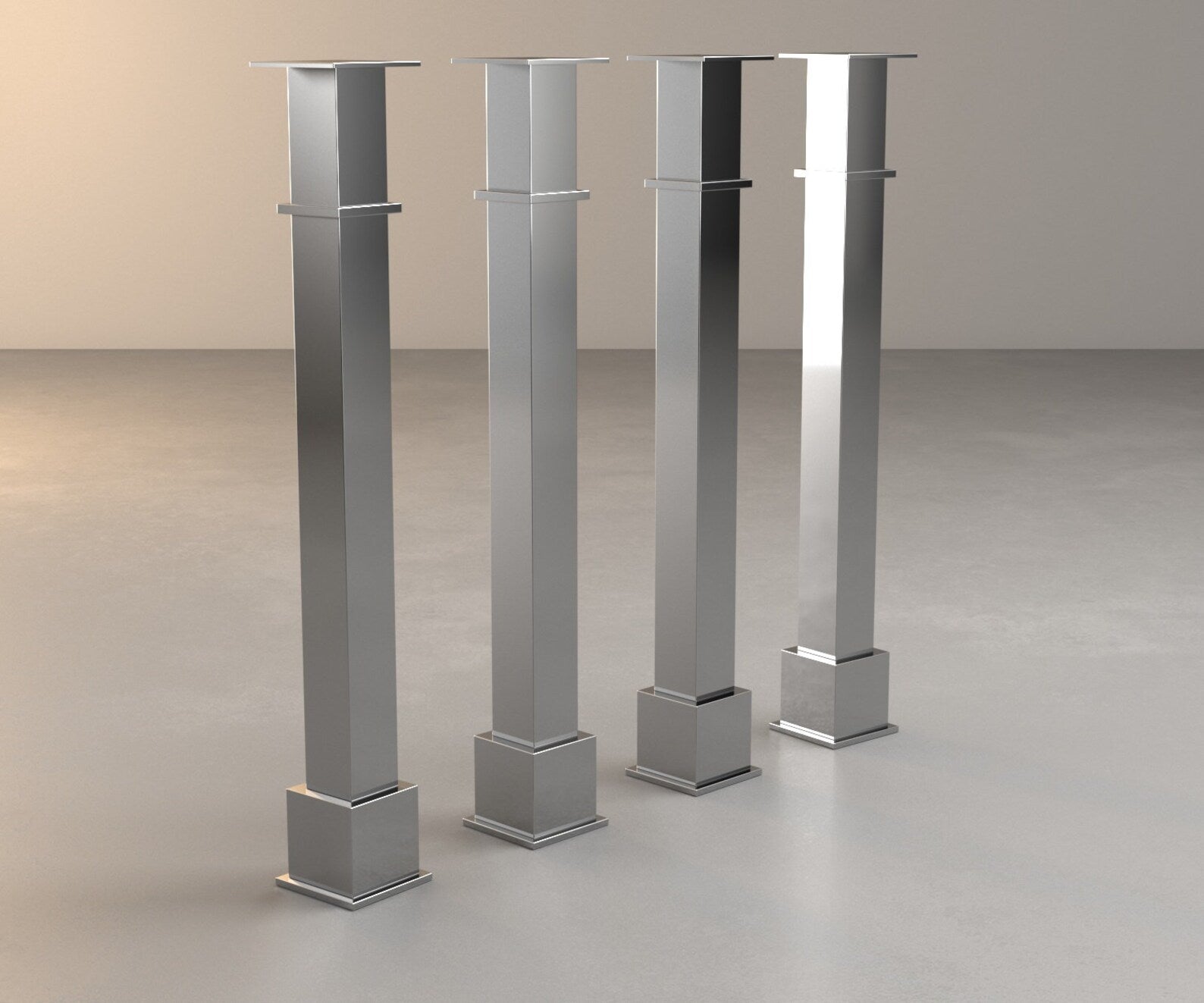Discover Affordable and Chic Solutions in Legs For Kitchen Island Updates
Discover Affordable and Chic Solutions in Legs For Kitchen Island Updates
Blog Article
A Guide to Selecting the Perfect Legs For Cooking Area Island for Your Home
Picking the suitable legs for your cooking area island is a nuanced decision that influences both the performance and visual allure of this central room. Elements such as elevation, products, and style play a vital role in balancing your island with the general kitchen area layout. Additionally, comprehending the relevance of security and upkeep can considerably influence your choice. As you consider these aspects, it becomes noticeable that the right legs can transform not just the appearance of your cooking area but likewise its usability for several years ahead. What particular functions should you focus on in this choice process?

Comprehending Kitchen Island Legs
When picking legs for a kitchen area island, it's important to understand their aesthetic and practical roles in the general layout. The legs function as a critical assistance system, making sure stability and toughness for the island, which frequently operates as an office, eating area, or gathering place. The option of material and construction technique need to be durable adequate to withstand day-to-day use and potential wear.
In addition to their structural responsibilities, legs contribute considerably to the island's visual charm. They can enhance the kitchen's style, whether via traditional, modern, or eclectic layouts. The height and proportion of the legs are also vital factors to consider; they need to harmonize with the island's countertop elevation while making certain comfy seating for those utilizing the space.
Additionally, the leg design can influence the total flow of the cooking area. Open, airy leg styles can create a sense of lightness, while strong, substantial legs might share a more based and stable aesthetic - Legs For Kitchen Island. Understanding these aesthetic and functional aspects will certainly lead house owners in making informed selections that complement their cooking area's layout and improve its functionality
Popular Styles and Materials
The choice of legs for a kitchen island encompasses a selection of preferred styles and products, each offering one-of-a-kind characteristics that can boost both capability and aesthetics. Amongst one of the most in-demand styles are contemporary, rustic, and typical. Contemporary legs usually feature streamlined, minimal layouts that highlight simplicity and tidy lines, making them excellent for modern-day kitchen areas. Rustic designs, on the other hand, embrace natural environments and often display redeemed timber or troubled surfaces, adding warmth and beauty to the space. Typical legs typically display ornate details and craftsmanship, boosting traditional kitchen area layouts.

Elevation and Security Considerations

Stability is an additional crucial consideration. The legs of the kitchen island need to supply sufficient assistance, making certain that the structure can withstand day-to-day use without tottering or moving. Material choice plays a significant role in security; metal legs, for circumstances, have a tendency to offer higher strength contrasted to wood. In addition, guaranteeing that the island is securely anchored to the flooring or wall can boost stability, specifically for larger islands that may birth considerable weight.
Matching Your Kitchen Area Visual
Selecting the right legs for your cooking area island goes beyond performance; it additionally plays a significant role in the general visual of the room. When choosing legs, think about the layout style of your cooking area. For a contemporary look, smooth steel or minimal layouts can create a clean, modern vibe. On the other hand, typical or rustic kitchens commonly profit from wood legs with intricate detailing or a distressed finish, enhancing warmth and character.
Legs that enhance or comparison with your island's surface and bordering cabinets can create aesthetic consistency or striking focal points. In addition, think about the finish of the legs; matte, shiny, or distinctive finishes can dramatically affect the overall feeling of the kitchen area.
Installation and Upkeep Tips
Setting up kitchen island legs calls for cautious attention to information to guarantee both security and aesthetic appeal. Begin by picking a suitable area for your island, ensuring it is degree and has sufficient room for motion. Use a stud finder to find wall surface studs if you are connecting the legs to a wall or making use of brackets for added assistance. Mark the placement of the legs precisely prior to drilling.
When safeguarding the legs, utilize high-quality screws and, if needed, timber glue for extra stamina. For basics steel legs, ensure that you are utilizing ideal supports and tools to stop damages to your floor covering. It is recommended to inspect for levelness after installment, making changes as needed to prevent wobbling.
Clean the legs with a suitable cleaner, avoiding abrasive products that might scrape the surface. By following these installation and upkeep pointers, you can make certain that your cooking area island legs continue to be both visually enticing and useful.
Final Thought
To conclude, picking the proper legs for a cooking area island necessitates careful consideration of height, security, and visual compatibility. By selecting suitable products and designs that align with the total kitchen area design, capability can be boosted while preserving visual allure. Appropriate installment and ongoing upkeep even more contribute to the toughness and durability of the kitchen area island. Eventually, thoughtful leg selection plays an essential function in boosting both the functionality and design of the cooking area room.
When selecting legs for a kitchen area island, it's important to comprehend their visual and functional Extra resources functions in the over here total design. Open, ventilated leg styles can produce a feeling of agility, while solid, substantial legs may communicate a more based and steady visual. The legs of the cooking area island must offer ample support, guaranteeing that the framework can withstand everyday use without tottering or moving.Mounting kitchen area island legs requires mindful interest to detail to make certain both stability and aesthetic charm.In conclusion, choosing the appropriate legs for a kitchen island necessitates careful factor to consider of height, stability, and aesthetic compatibility.
Report this page